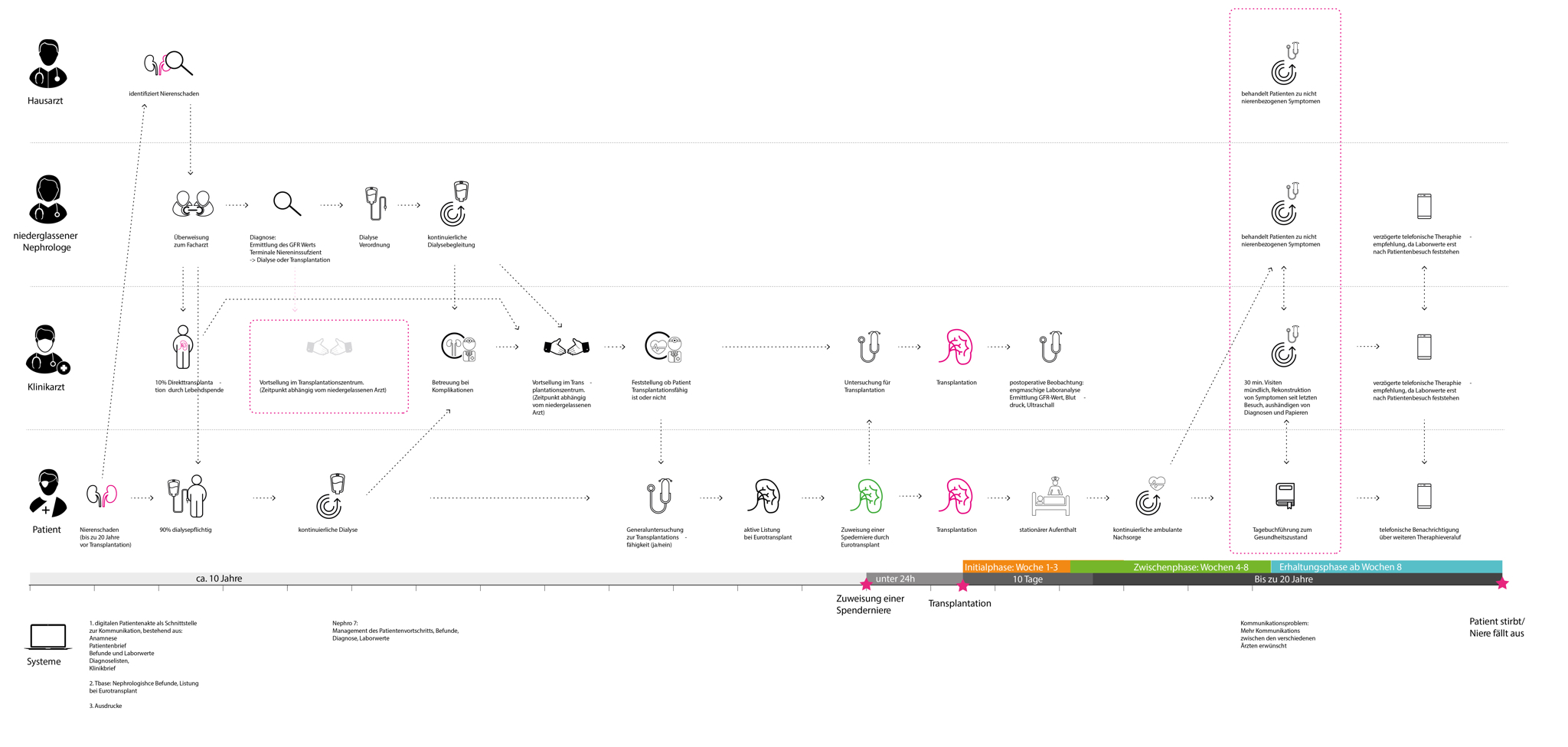For a publicly funded project in field of kidney diseases, I have investigated for SAP the needs of nefrologists, GPs and patients who are awaiting to undergo or have recently undergone a kidney transplantation. By connecting all treating doctors and the patient to each other, SAP´s stake in the project was to provide a solution for doctors that visualizes patient health data, in order to avoid kidney rejection.
Research Scope
Generative user research, use case definition and concept creation
This should be achieved by monitoring various parameters such as medication, sensor data, patient diary, patient-doctor interactions, and diagnosis and thus facilitate decision making on further treatment steps.
Context Mapping
Expert-matter interviews, Work place observation, Analysis of existing solutions, Process mapping
Processing the insight from user research, I have created a user journey map of the current state at hand, established a point of view to the problem and identified potential access points to the technical solution space.
Point of View
The the collection of self-reported patient health data that is enhanced with mobile sensor data and professional clinical diagnosis, needs to cater to the following issues:
- Keep all treating doctors up-2-date about a patient´s health condition.
- Present the most relevant patient information during the 10 min. consultation between patient and doctor in order to help clinicians decide on the further treatment course.
- Warn about combination of symptoms and drug conflicts.
- Reveal the occurance of other diseases.
- Motivate the patient through data to continuously take his drugs.
Project Kick-Off
2-day Design Thinking Workshop to align all stakeholders, obtain a shared understanding of the problem and manage expectations towards the project.
Design Artefacts
Results from the workshop were processed into personas, a service architecture, a task model, workflows and future use scenarios for target users


